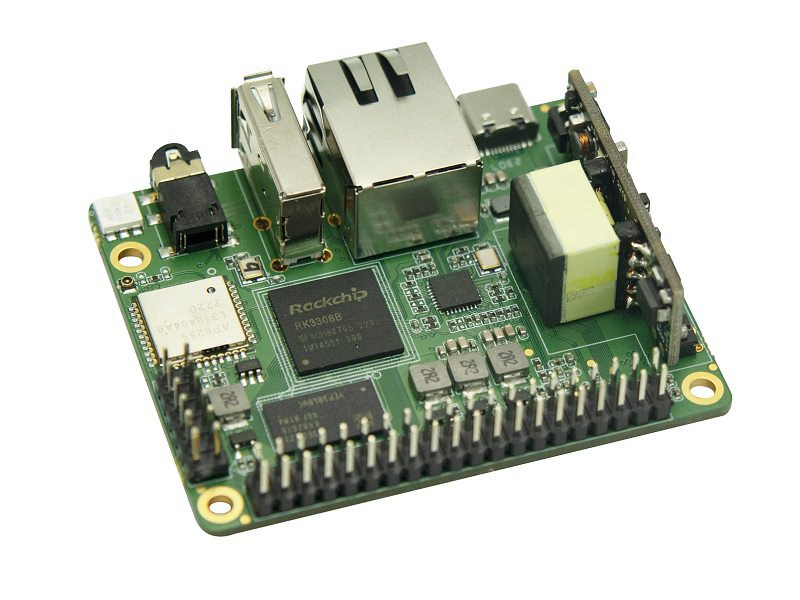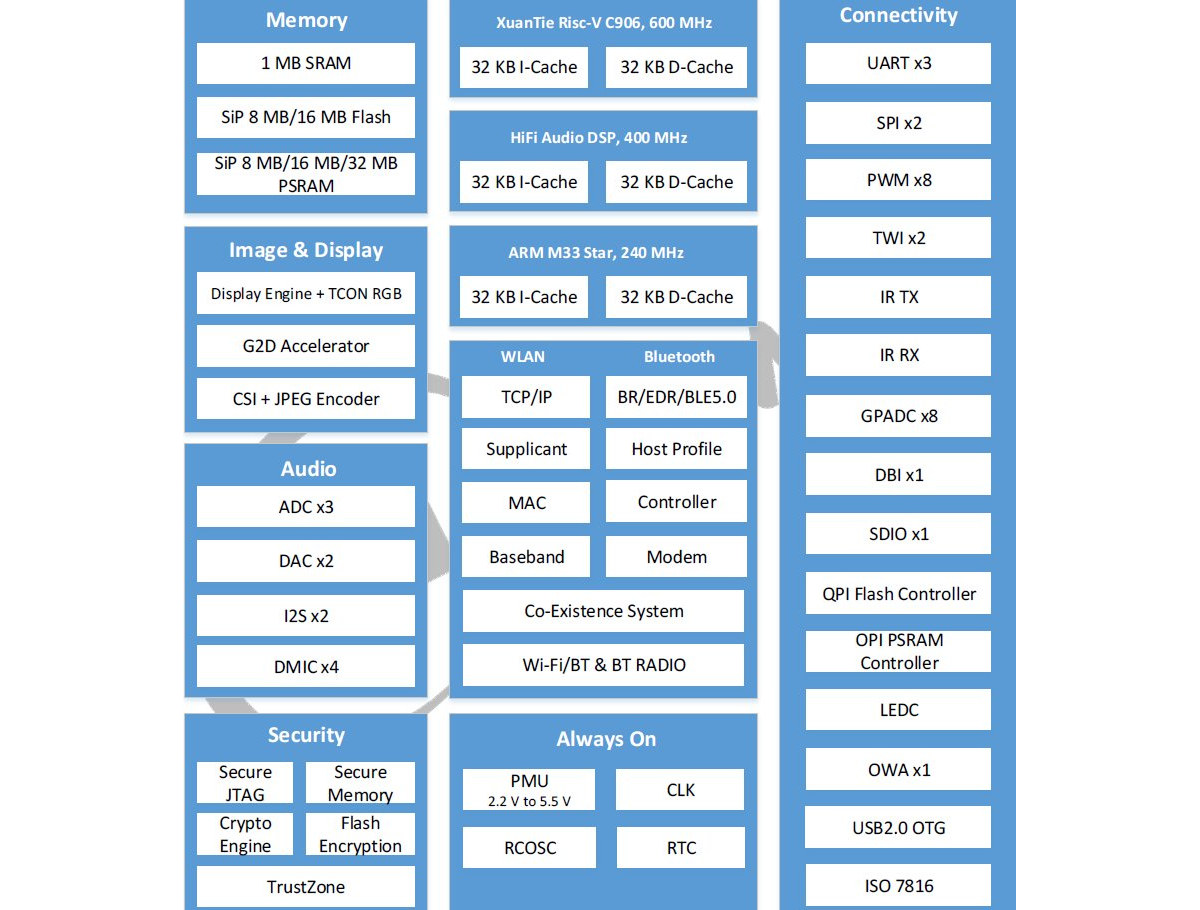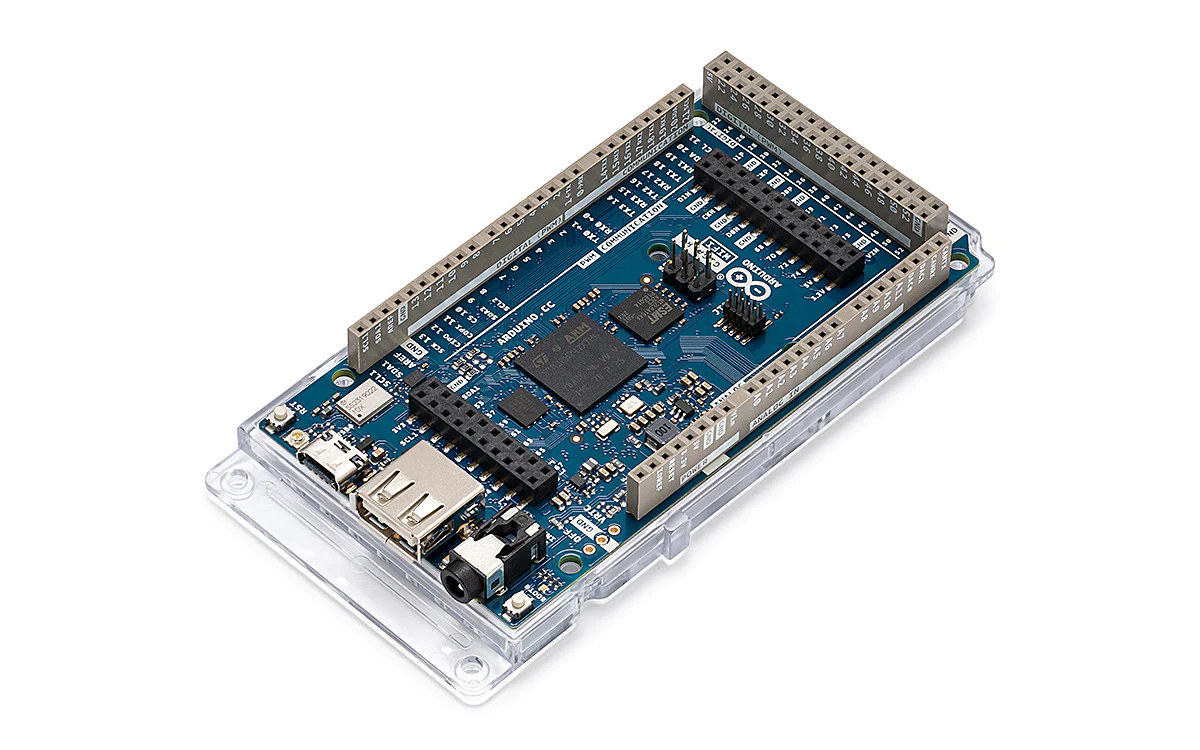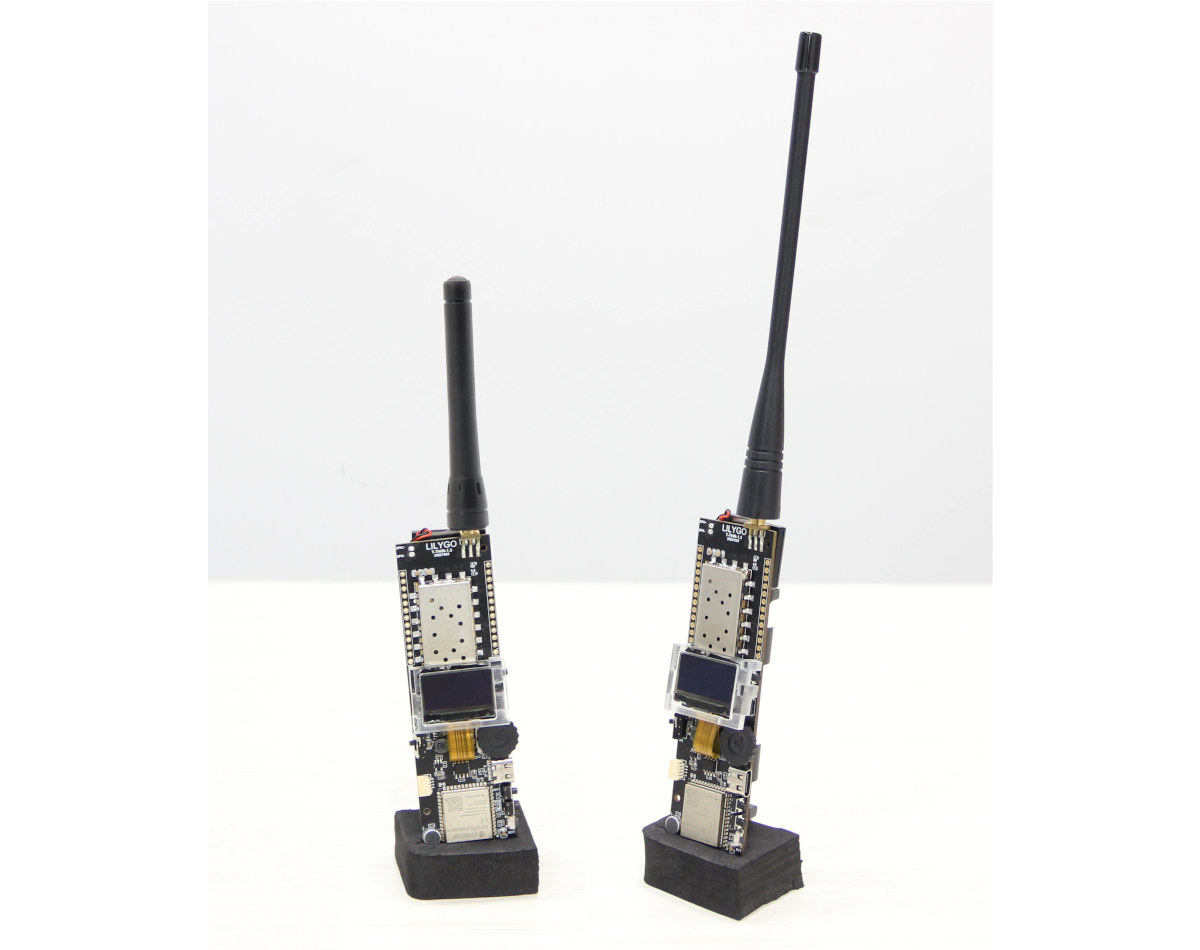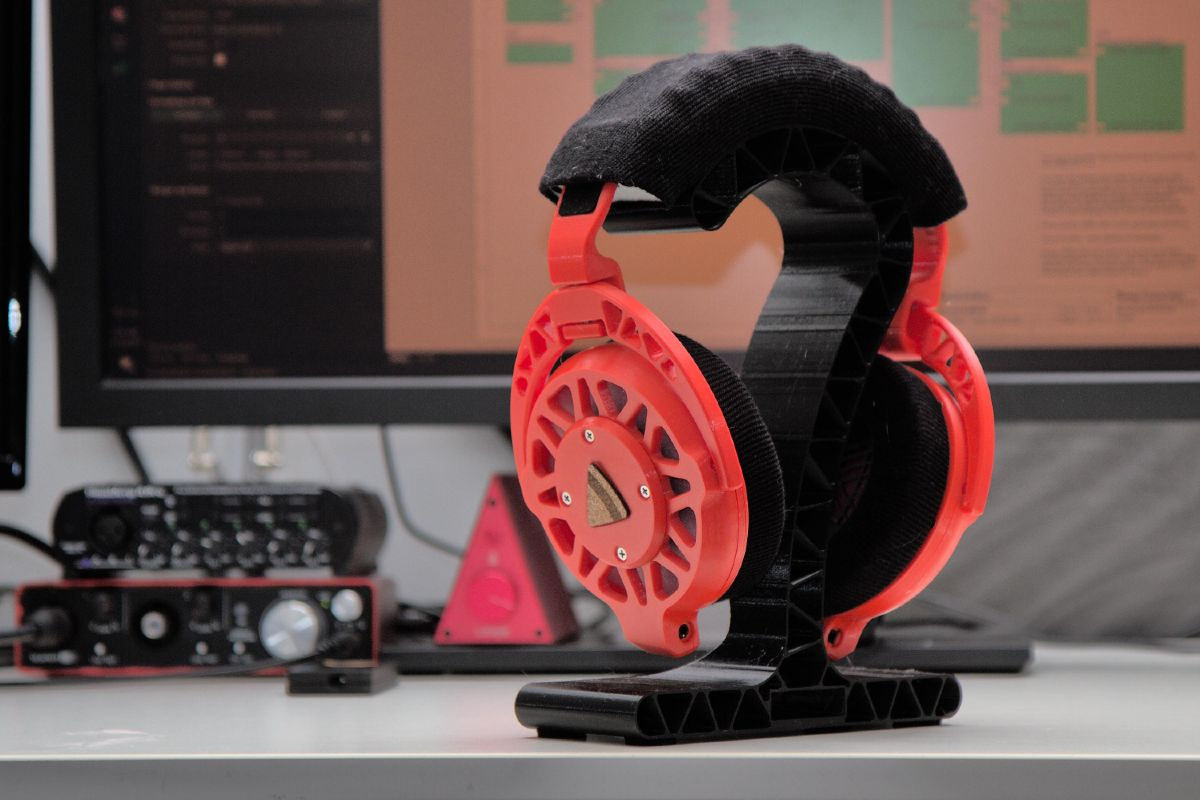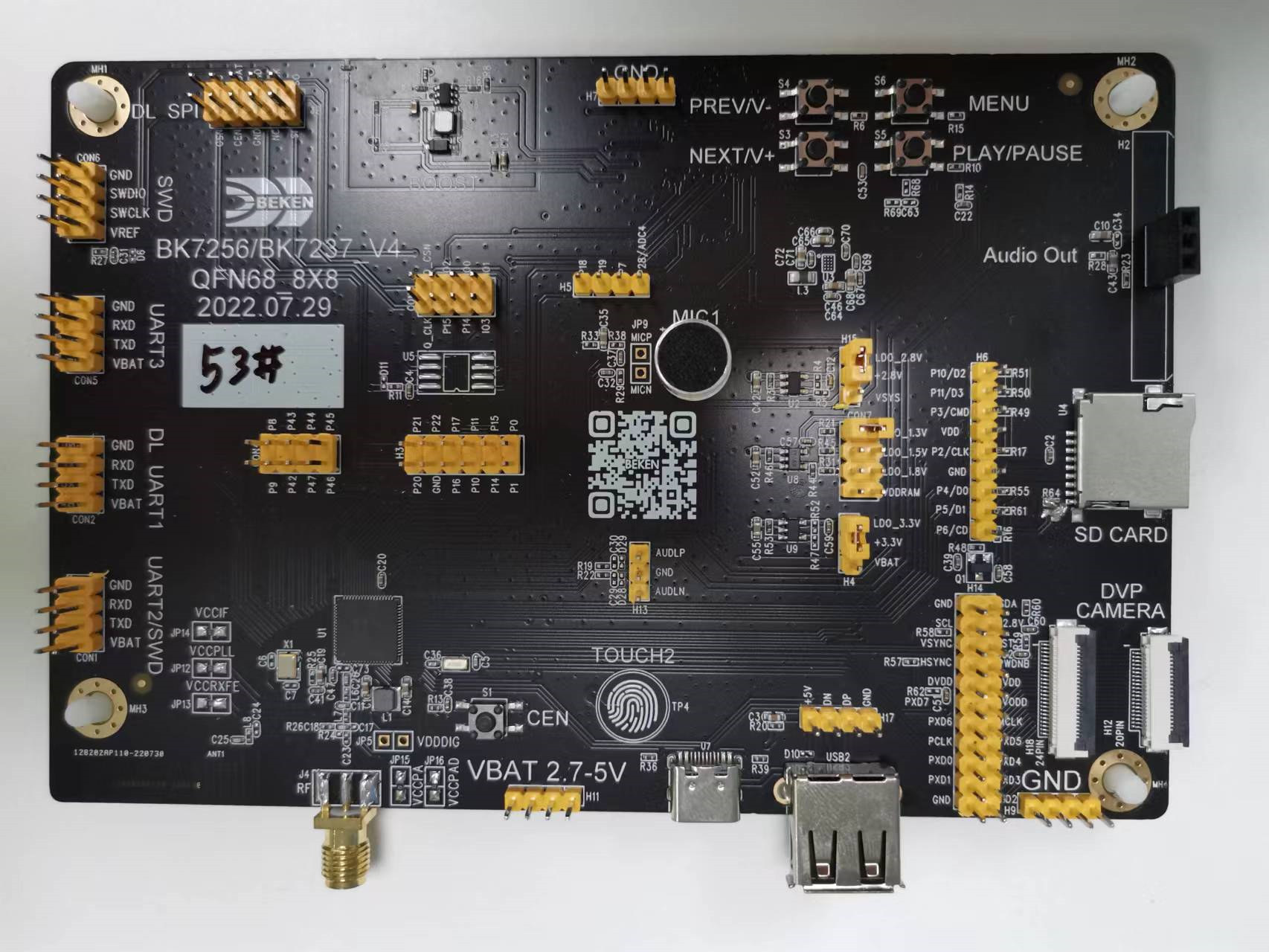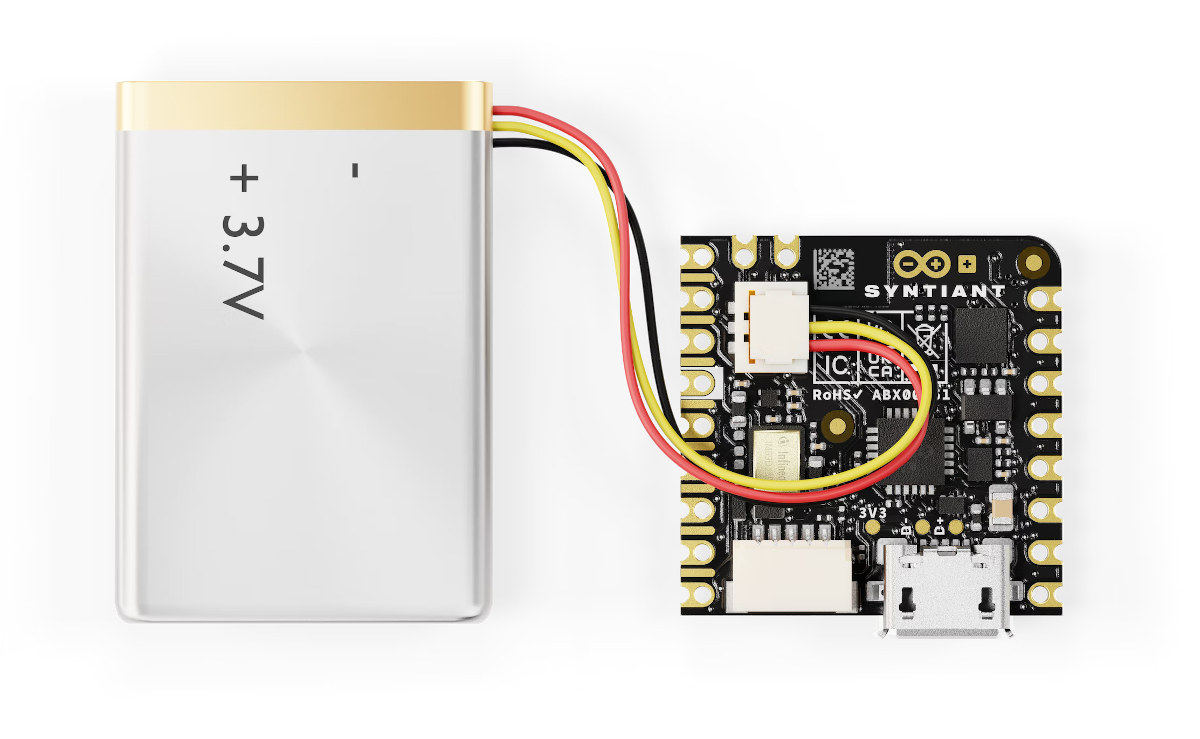Banana Pi BPI-P2 Pro is Rockchip RK3308 quad-core Cortex-A35 SBC for headless applications with a PoE-capable Ethernet port, WiFi 5, a USB port, an audio jack, and two GPIO headers for expansion. You may think the Banana Pi guys have gone crazy by calling such entry-level level SBC “Pro”, but that’s because the company previously released the BPI-P2 Zero and BPI-P2 Maker single board computers based on Allwinner H2+ quad-core Cortex-A7 processor, so the BPI-P2 Pro is indeed an improvement albeit with some caveats. Banana Pi BPI-P2 Pro specifications: SoC – Rockchip RK3308 quad-core Arm Cortex-A35 processor @ up to 1.3 GHz with built-in VAD (Voice Activity Detector) System Memory – 2GB LPDDR2 SDRAM [Update: According to Rockchip RK3308 specifications, the maximum memory capacity is 512MB, so Banana Pi may have meant 2 Gbit instead, meaning 256MB of RAM]. Storage – 8GB eMMC flash, microSD card slot Video Output – […]
Allwinner R128 wireless SoC features 64-bit RISC-V core, Arm Cortex-M33 core, and HiFi 5 audio DSP
Allwinner is mostly known for its low-cost Arm processor running Android or Linux, but the Allwinner R128 is a wireless audio SoC with a C906 64-bit RISC-V application core, an Arm Cortex-M33 real-time time core, a HiFi 5 DSP, and built-in WiFi and Bluetooth connectivity. The SoC also comes with 1MB SRAM, up to 16MB flash, up to 32MB PSRAM, display and camera interfaces, support for microphone arrays, and plenty of I/Os that should make it suitable for smart speakers and other voice-controlled home appliances with or without display. Allwinner R128 specifications: Application core – Xuantie C906 64-bit RISC-V core clocked at 600 MHz. DSP – Cadence HiFi 5 audio DSP clocked at 400 MHz Communication core – Arm M33 Star (Cortex-M33 from Arm China?) core clocked at 240 MHz with Trustzone support Memory 1MB SRAM 8MB, 16MB, or 32MB PSRAM (SiP = System-in-Package) OPI PSRAM controller Storage QPI flash […]
Arduino GIGA R1 WiFi board launches with STM32H7 MCU, up to 76 I/O pins
Arduino GIGA R1 WiFi board brings the STM32H7 dual-core Cortex-M7/M4 microcontroller found in the Portenta H7 boards to the larger Arduino Mega/Due form factor with up to 76 GPIO pins. As its name implies, the board also comes with a WiFi 4 (and Bluetooth 5.1) module, as well as an audio jack, a USB Type-C port for programming, a USB 2.0 Type-A host port, and extra connectors for a display and a camera. Arduino GIGA R1 WiFi board specifications: Microcontroller – STMicro STM32H747XI Cortex-M7 @ 480 MHz + M4 @ 200 MHz MCU with 2MB dual-bank Flash memory, 1 MB RAM, Chrom-ART graphical hardware accelerator System Memory – 8MB SDRAM Storage – 16MB QSPI NOR flash Connectivity – 2.4GHz WiFi 802.11b/g/n up to 65 Mbps and Bluetooth 5.1 BR/EDR/LE via Murata 1DX module Display – 20-pin header (J5) Camera – 20-pin Arducam camera header (J6) USB 1x USB Type-C port […]
LILYGO T-TWR is an ESP32-S3 board with an SA868 Walkie-Talkie module
LILYGO T-TWR is an ESP32-S3 development board fitted with an SA868 Walkie-Talkie module and a UHF or VHF antenna, a speaker, a microphone, a small 0.96-inch OLED, and a 18650 battery holder, plus some I/Os for expansion. Equipped with an ESP32-S3-WROOM-1-16NR8 module, the T-TWR offers WiFi 4 and Bluetooth 5.0 connectivity, a dual-core processor with 16MB flash and 8MB PSRAM, and enables users to design their own Walkie-Talkie, while its expansion capabilities allow the control of devices. LILYGO T-TWR specifications: Wireless module – Espressif ESP32-S3-WROOM-1-N16R8 module with ESP32-S3 dual-core LX7 microprocessor @ up to 240 MHz with Vector extension for machine learning, 16MB FLASH, 8MB PSRAM, WiFi 4 and Bluetooth 5 LE/Mesh Display – 0.96-inch OLED with 128×64 resolution based on SSD1306 I2C display driver SA868 Walkie-Talkie module based on RDA1846S chip Bandwidth: 12.5 kHz/25 kHz Sensitivity: -124 dBm Support 1.6W or 1.8W mode. The latter is not recommended due […]
Ploopy – 3D printed open-source hardware headphones feature Raspberry Pi RP2040 MCU, TI PCM3060 24-bit DAC
I don’t think I’ve ever written about open-source hardware headphones. But that’s precisely what Ploopy offers with an amplifier based on a Raspberry Pi RP2040, a Texas Instruments PCM3060 24-bit DAC, and an amplifier circuit, as well as 3D printed parts and open-source firmware written in C. As we’ll see further below the project is reasonably well documented, and you can either build it from scratch, purchase a fully-assembled kit, or something in the middle. I suppose you could even do some knitting since woven covers are part of the build just in case making your own PCBs and 3D printing parts are not your things. The electronics are comprised of two boards: The Gould amplifier board with the Raspberry Pi RP2040, Texas Instruments PCM3060 24-bit 96/192 kHz DAC, and several TI OPA1688 audio operational amplifiers The Mazzoleni driver flex boards going into the left and right rings with a […]
The Wi-R protocol relies on body for data communication, consumes up to 100x less than Bluetooth
The Wi-R protocol is a non-radiative near-field communication technology that uses Electro-Quasistatic (EQS) fields for communication enabling the body to be used as a conductor and that consumes up to 100x less energy per bit compared to Bluetooth. In a sense, Wi-R combines wireless and wired communication. Wi-R itself only has a wireless range of 5 to 10cm, but since it also uses the body to which the Wi-R device is attached, the range on the conductor is up to 5 meters. While traditional wireless solutions like Bluetooth create a 5 to 10-meter field around a person, the Wi-R protocol creates a body area network (BAN) that could be used to connect a smartphone to a pacemaker, smartwatch, and/or headphones with higher security/privacy and longer battery life. One of the first Wi-R chips is Ixana YR11 with up to 1Mbps data rate, and they are working on a YR21 […]
Beken BK7256 320 MHz dual-core RISC-V IoT MCU offers WiFi 6, Bluetooth 5.2, JPEG video encoder/decoder
Until now, I had only heard about Beken Bluetooth audio chips, but I’ve just been informed the company is also making WiFi chips such as the BK7256 that are notably found in some Tuya Smart Home modules. Beken offers both RISC-V and Arm WiFi and Bluetooth chips with features summarized as follows: BK7235 single-core RISC-V MCU up to 320 MHz with 2.4 GHz WiFi 6 802.11ax and Bluetooth 5.2 LE, 4MB flash, 512KB SRAM, optional 4MB PSRAM BK7236 dual-core Arm MCU up to 120 to 240 MHh with 2.4 GHz WiFi 6 802.11ax and Bluetooth 5.3 dual mode, 4MB flash, 512KB SRAM, optional 4MB PSRAM BK7237 dual-core RISC-V MCU up to 320 MHz with 2.4 GHz WiFi 6 802.11ax and Bluetooth 5.2 dual mode, 4 or 8MB flash, 512KB SRAM, optional 4MB PSRAM BK7256 dual-core RISC-V MCU up to 320 MHz with 2.4 GHz WiFi 6 802.11ax and Bluetooth 5.2 […]
Arduino Nicla Voice enables always-on speech recognition with Syntiant NDP120 “Neural Decision Processor”
Nicla Voice is the latest board from the Arduino PRO family with support for always-on speech recognition thanks to the Syntiant NDP120 “Neural Decision Processor” with a neural network accelerator, a HiFi 3 audio DSP, and a Cortex-M0+ microcontroller core, and the board also includes a Nordic Semi nRF52832 MCU for Bluetooth LE connectivity. Arduino previously launched the Nicla Sense with Bosch SensorTech’s motion and environmental sensors, followed by the Nicla Vision for machine vision applications, and now the company is adding audio and voice support for TinyML and IoT applications with the Nicla Voice. Nicla Voice specifications: Microprocessor – Syntiant NDP120 Neural Decision Processor (NDP) with one Syntiant Core 2 ultra-low-power deep neural network inference engine, 1x HiFi 3 Audio DSP, 1x Arm Cortex-M0 core up to 48 MHz, 48KB SRAM Wireless MCU – Nordic Semiconductor nRF52832 Arm Cortex-M4 microcontroller @ 64 MHz with 512KB Flash, 64KB RAM, Bluetooth […]


